Introduction:
Choosing the right tires for your electric bike (e-bike) is crucial for a safe, comfortable, and efficient riding experience. This guide will walk you through the importance of tire selection, tire pressure guidelines, and maintenance tips for e-bike tires.
Section 1: Understanding E-bike Tire Basics
Electric bike tires play a pivotal role in determining the quality of your ride. They affect your ride's safety, comfort, and efficiency. Maintaining the appropriate tire pressure is vital to ensure a balanced, smooth, and enjoyable ride on your electric bike.
1.1 Importance of E-bike Tire Pressure
Tire pressure is the internal air pressure of the tire, influencing its shape, elasticity, and consequently, your e-bike's ride quality, handling, and efficiency. Maintaining the right tire pressure is crucial as it can:
-
Enhance Safety: Proper tire pressure prevents excessive tire deformation or blowouts, mitigating accidents and damage.
-
Increase Comfort: Appropriate tire pressure allows tires to better absorb road vibrations and shocks, reducing discomfort and fatigue during the ride.
-
Improve Efficiency: Correct tire pressure ensures optimal tire-road contact, minimizing friction and resistance, thus saving power and extending the range of your e-bike.
Section 2: Impact of Tire Pressure on Ride Quality, Handling, and Efficiency
Tire pressure affects the contact area and elasticity between the tire and the road, thereby influencing ride quality, handling, and efficiency. Generally, higher tire pressure results in a smaller contact area, greater elasticity, poorer ride quality, better handling, and higher efficiency. Conversely, lower tire pressure leads to a larger contact area, less elasticity, better ride quality, poorer handling, and lower efficiency. Therefore, finding the ideal tire pressure for your e-bike is essential based on your riding needs and preferences.
Section 3: Recommended Tire Pressure Range for Different E-bike Tire Types and Sizes
Different e-bike tire types and sizes have specific recommended tire pressure ranges. You can find this information on the tire sidewall or refer to the tire manufacturer's guidelines. Here are examples of common e-bike tire types, sizes, and their recommended tire pressure ranges:
-
Slick Tires: Slick tires typically require higher tire pressure to maintain their shape and elasticity. The recommended tire pressure range for slick tires is usually 60-100 psi or 4-7 bar. For instance, if your e-bike uses 700 x 35 slick tires, you can set the tire pressure around 70 psi or 5 bar.
-
Semi-Slick Tires: Semi-slick tires usually require moderate tire pressure to maintain their balance and adaptability. The recommended tire pressure range for semi-slick tires is generally 40-80 psi or 3-5 bar. For example, if your e-bike uses 26 x 1.75 semi-slick tires, you can set the tire pressure at around 50 psi or 3.5 bar.
-
Treaded Tires: Treaded tires typically require lower tire pressure to maintain their traction and grip. The recommended tire pressure range for treaded tires is usually 20-60 psi or 1.5-4 bar. For instance, if your e-bike uses 20 x 2.0 treaded tires, you can set the tire pressure at around 30 psi or 2 bar.
Section 4: How to Properly Check and Adjust Tire Pressure
Checking and adjusting tire pressure is a simple yet crucial process that you should do regularly to keep your e-bike in its optimal condition. Here are steps on how to properly check and adjust your tire pressure:
4.1 Gather the Tools
You'll need a tire pressure gauge to measure and display your tire pressure accurately. Additionally, you'll need an inflation pump to increase or decrease tire pressure according to your requirements. You can use either a manual or an electric pump, as long as they match your tire valve. Generally, e-bike tires have two types of valves: Schrader valves and Presta valves. You can find the type of valve your tires have on the tire sidewall or refer to the tire manufacturer's guidelines.
4.2 Check Tire Pressure
You should check your tire pressure before or after each ride, or at least once a week. Connect the tire pressure gauge to your tire valve and read the displayed value. Compare this value with the recommended tire pressure range for your tire type and size to determine if your tire pressure is appropriate. If your tire pressure is too high or too low, you should make adjustments.
4.3 Adjust Tire Pressure
Connect the inflation pump to your tire valve and increase or decrease tire pressure according to your needs. If your tire pressure is too high, you can press the small button on the valve to release some air. If your tire pressure is too low, you can use the pump to inject air into the tire. Check your tire pressure periodically during the adjustment, until you achieve your target value. Avoid overinflating or deflating to prevent damage to your tire or affect your ride.
Section 5: Tips for Maintaining Consistent Tire Pressure and Extending Tire Lifespan
Maintaining consistent tire pressure and extending tire lifespan are every electric bike rider's goals. You can achieve this through some simple tips. Here are some tips for maintaining consistent tire pressure and extending tire lifespan:
5.1 Regularly Check and Adjust Tire Pressure
This is the most basic and crucial tip. Develop a good habit of regularly checking and adjusting your tire pressure to keep your e-bike in its optimal state. Check and adjust your tire pressure before or after each ride, or at least once a week, to avoid tire deformation or blowouts, thus enhancing safety, comfort, and efficiency.
5.2 Choose the Right Tire Type and Size
This is an important tip. Based on your e-bike type, usage, riding conditions, and preferences, select the appropriate tire type and size to enhance your e-bike's performance and adaptability. You can refer to the first and second sections of this guide to understand how to choose the right tire size and tread pattern that meet your riding needs.
5.3 Avoid Extreme Riding Conditions
This is a useful tip. Try to avoid riding in extreme conditions to reduce wear and tear on your tires. Avoid riding in excessively hot or cold temperatures to maintain your tire's softness and elasticity. Avoid riding in overly wet or dry humidity to preserve your tire's sliding and grip. Avoid riding on overly rough or fine road surfaces to preserve your tire's durability and puncture resistance.
5.4 Keep Tires Clean and Well-Maintained
This is a simple tip. Regularly clean and maintain your tires to extend their lifespan and keep them in good condition. Use some gentle cleaners and a soft cloth to gently wipe your tires to remove dust and dirt. Use some professional lubricants and protectants to apply on your tires to increase their shine and waterproofing. Use some repair tools and tire repair kits to fix small holes or scratches on your tires to prevent them from enlarging or leaking. Keeping tires clean and well-maintained is also helpful for the tire lifespan of your e-bike.
Section 6: Factors Influencing E-bike Tire Selection
6.1 Rider's Weight and its Impact on Tire Selection
The rider's weight affects the tire's load capacity and durability. Generally, heavier riders need to choose larger, sturdier, and more durable tires to avoid excessive tire wear or blowouts. Conversely, lighter riders can choose smaller, more flexible, and lighter tires to improve speed and handling. For example, if you weigh 80 kilograms, you might opt for 26-inch tires, which have higher load capacity and durability. If you weigh 50 kilograms, you might choose 20-inch tires, which offer higher speed and maneuverability.
6.2 E-bike Types and Expected Usage Relevant to Tire Selection
The e-bike types and expected usage relevant to tire selection refer to the design and functionality of your e-bike and what you intend to do with it. Different e-bike types and expected usage will influence your tire selection, as they determine your riding style and conditions. Here are some common e-bike types, expected usages, and their impact on tire selection:
-
Commute E-bikes: Commute e-bikes are for daily commuting and work, characterized by higher speed and range, as well as lower weight and maintenance costs. If your e-bike is a commute e-bike, you can choose larger, narrower, and smoother tires to suit flat, dry road surfaces, and improve speed and efficiency.
-
Off-road E-bikes: Off-road e-bikes are for adventure and recreation, characterized by strong traction and suspension systems, as well as higher weight and maintenance costs. If your e-bike is an off-road e-bike, you can choose smaller, wider, and rougher tires to adapt to rough, wet off-road surfaces, and improve handling and grip.
-
Touring E-bikes: Touring e-bikes are for long-distance traveling and exploration, characterized by larger cargo capacities and ranges, as well as higher comfort and adaptability. If your e-bike is a touring e-bike, you can choose medium-sized tires and tread patterns to adapt to various riding conditions, and improve comfort and stability.
Section 7: Environmental Factors and their Impact on Tire Selection
Environmental factors refer to the natural characteristics of your riding location and time, such as weather, terrain, climate, etc. Environmental factors will influence your tire selection, as they determine your tire's performance and lifespan. Here are some common environmental factors and their impact on tire selection:
-
Weather: Weather affects tire temperature, humidity, sliding, and grip. Generally, the hotter the weather, the softer the tires, and the easier they deform; the colder the weather, the harder the tires, and the easier they crack. The wetter the weather, the more slippery the tires, and the easier they skid; the drier the weather, the drier the tires, and the easier they grip. Therefore, you need to choose the appropriate tire type and size based on your riding weather. For example, if you're riding in the hot summer, you can choose harder, smoother tires to reduce heat and friction; if you're riding in the cold winter, you can choose softer, rougher tires to increase grip and elasticity.
-
Terrain: Terrain affects tire wear, durability, and puncture resistance. Generally, the rougher the terrain, the thinner the tires, and the easier they get damaged; the smoother the terrain, the thicker the tires, and the easier they maintain. The more uneven the terrain, the wider the tires, and the easier they absorb vibrations and shocks; the flatter the terrain, the narrower the tires, and the easier they improve speed and efficiency. Therefore, you need to choose the appropriate tire type and size based on your riding terrain. For example, if you're riding on rough surfaces, you can choose thicker, sturdier tires to add a protective layer and puncture resistance; if you're riding on smooth surfaces, you can choose thinner, more flexible tires to increase speed and maneuverability.
-
Climate: Climate affects tire lifespan and performance. Generally, the more extreme the climate, the easier the tires age and fail; the milder the climate, the easier the tires maintain and extend. The more variable the climate, the more the tires need to adapt and adjust; the more stable the climate, the more the tires need to fix and optimize. Therefore, you need to choose the appropriate tire type and size based on your riding climate. For example, if you're riding in tropical or frigid climates, you can choose softer, rougher tires to adapt to high temperatures and high humidity; if you're riding in temperate or arid climates, you can choose harder, smoother tires to adapt to low temperatures and low humidity.
-
Section 8: Conclusion
Selecting the right tires for your electric bike is a crucial decision that significantly impacts your overall riding experience. By understanding the importance of tire size, tread patterns, and tire pressure, you can make informed choices that align with your specific riding requirements. Armed with the knowledge from this guide, you'll be able to enhance your e-bike's performance, safety, and enjoyment by choosing the best tires. We hope this guide helps you in selecting the appropriate tires for your electric bike, improving your riding experience.

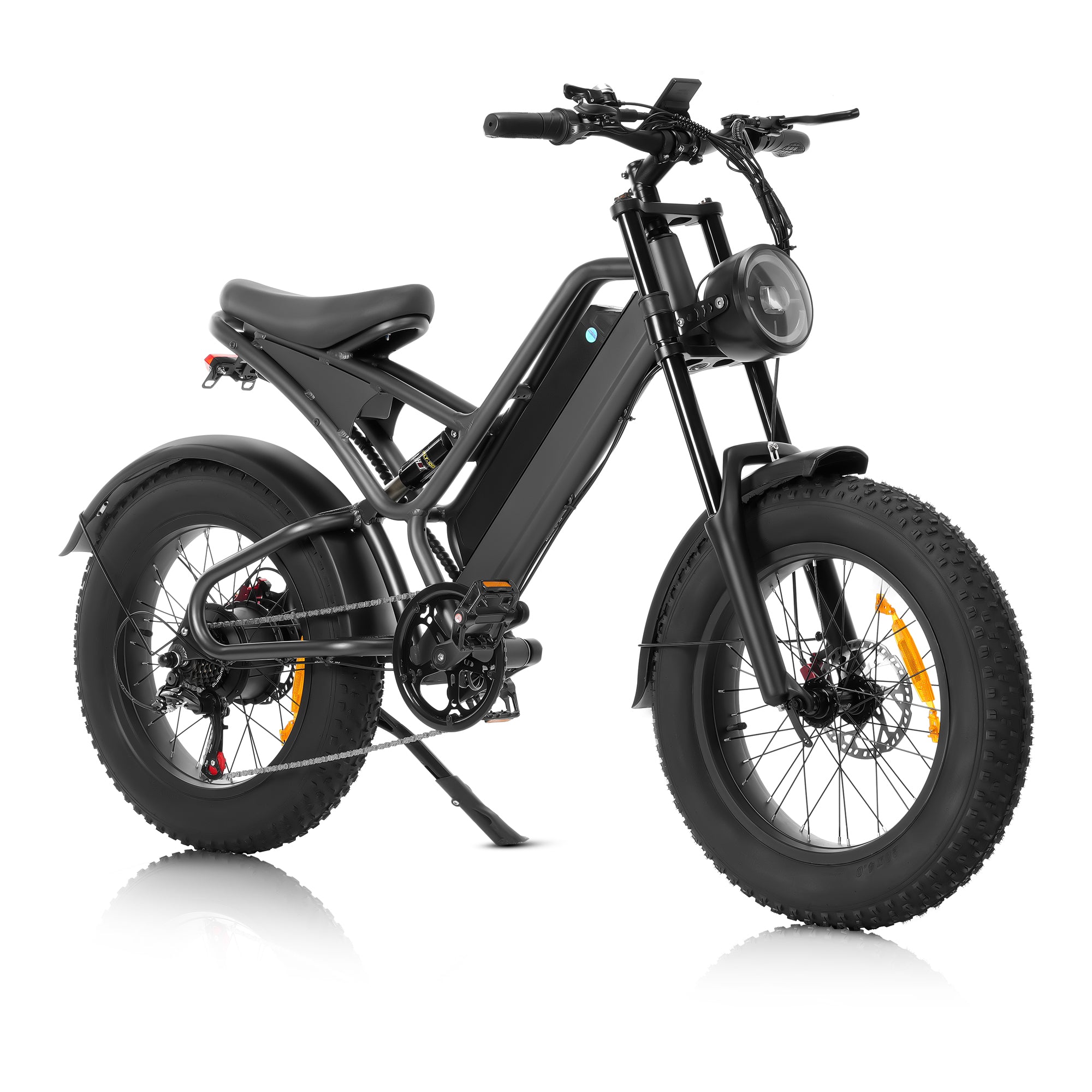


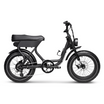
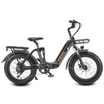
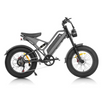
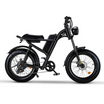
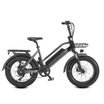







Leave a comment
All comments are moderated before being published.
Este site está protegido pela Política de privacidade da reCAPTCHA e da Google e aplicam-se os Termos de serviço das mesmas.